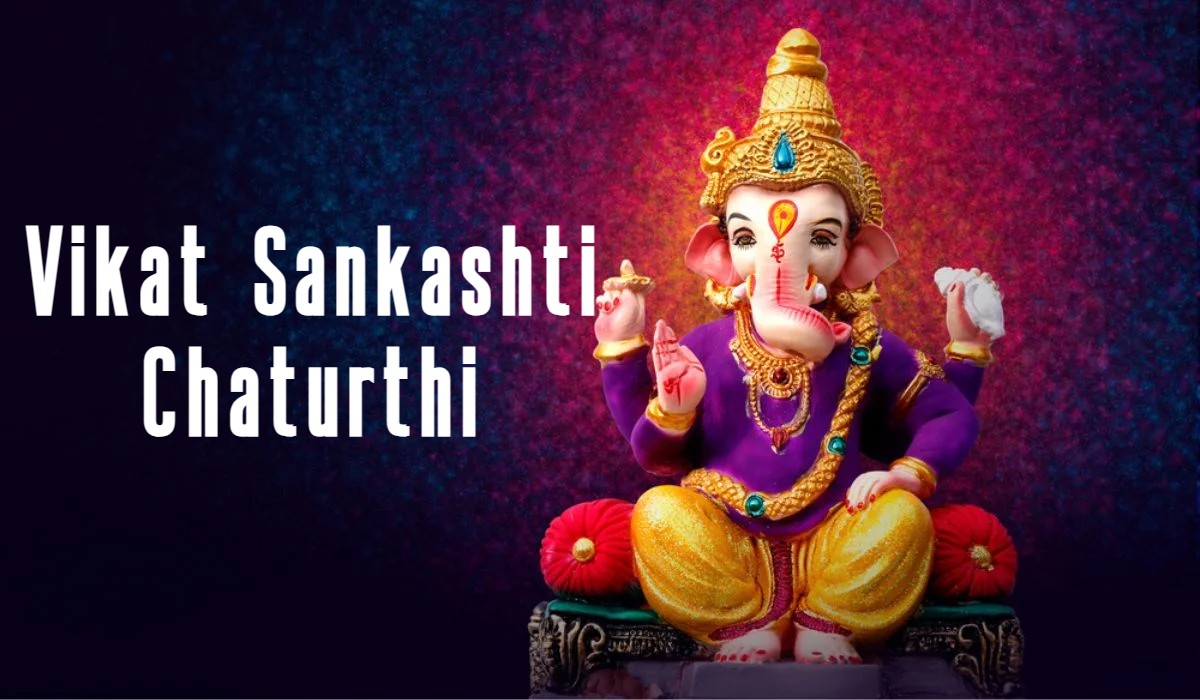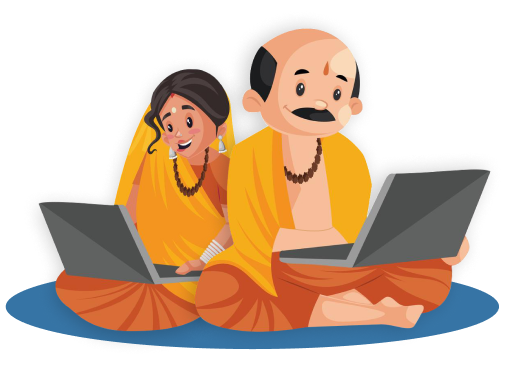Vikata Sankashti Chaturthi: Tithi, Significance, and Puja Vidhi

About Vikata Sankashti
Vikata Sankashti is dedicated to Bhagwan Ganesha or Bappa. The day falls on the Chaturthi Tithi of the Krishna Paksha. “Sankashti” means to remove obstacles and evils. People observe a fast to seek blessings from Bhagwan Ganesha.
In 2024, the Vikata Sankashti Chaturthi will be observed on April 27.
Vikata Sankashti Chaturthi 2024 Tithi
Vikata Sankashti Chaturthi on Saturday, April 27, 2024
- Moonrise on Sankashti Day – 10:23 PM
- Chaturthi Tithi Begins – 8:17 AM on Apr 27, 2024
- Chaturthi Tithi Ends – 8:21 AM on Apr 28, 2024
The Significance of Vikata Sankashti
The word “Sankashti” means deliverance, and by praying to Ganesha ji on this day for a happy life, devotees can get their wishes granted. Sankashti also means wiping out hurdles and evil.
Also, women struggling with fertility issues can receive blessings from Lord Ganesha during Vikata Sankashti Chaturthi. So, women who wish to conceive often observe the Vrat. Also, couples experiencing marital tensions may find harmony and peace by observing this vrat on this day and worshipping Ganesha.
Now, let us tell you about Vikata Chaturthi Vrat and Puja Vidhi
Vikata Sankashti Chaturthi Vrat and Puja Vidhi
Follow the below Vidhi to perform the Sankashti Chaturthi Puja:
- Before the puja, devotees take a bath and wear clean clothes to purify and cleanse themselves.
- Devotees gather puja items like a picture or idol of Ganesha Bhagwan, incense sticks, flowers, fruits, and sweets, including his favourite Modak.
- The puja starts by lighting a lamp and praying to Ganapati Bappa with mantras dedicated to him.
- People offer flowers, fruits, sweets, and other items while reading Sankashti Chaturthi Vrat Katha.
- People fast during the day and pray to Ganesha ji for help in overcoming challenges.
- After the prayers, they break their fast by eating prasad offered to the deity.
- The fast ends after moon sighting and Ganapati puja.
Story Behind Observance of Vikata Sankashti
Once, Bhagwan Shiva and Devi Parvati decided to play Chausar, but they needed someone to referee. So, Bhagwan Shiva created a boy and asked him to be the referee. The boy agreed, and the game began. Despite Devi Parvati winning three times in a row, the boy declared Bhagwan Shiva the winner, which upset her. She cursed the boy to live in a swamp. However, the boy apologised and begged for mercy, so Devi Parvati instructed him to wait for the Nag Kanyas and learn about the Sankashti Ganesh Chaturthi Vrat. By observing a fast for 21 days, he successfully lifted the curse with Bhagwan Ganesha’s blessings.
Another legend tells of how Devi Parvati created Ganesha out of turmeric paste and brought him to life to guard her door while she bathed. When Bhagwan Shiva returned, Ganesha, not recognising him, refused to let him enter. This angered Bhagwan Shiva. There was a war between Ganesh Bhagwan and his followers. Bhagwan Shiva’s followers were defeated by the powerful Ganesha. In a fit of rage, Shiva Ji severed Ganesha’s head. When Devi Parvati saw her son dead, she threatened to destroy the universe. To calm her down, Bhagwan Shiva promised to bring Ganesha back to life. He replaced Ganesha’s head with that of a baby elephant and declared him Ganesha, the remover of obstacles and the supreme lord of intelligence.
Frequently Asked Questions
Q: What can be eaten during Sankashti fast?
A: During the fast, devotees consume fruits, milk-based products, peanuts, sabudana khichdi, and potatoes.
Q: What time should I break Sankashti fast?
A: The fast ends after moon sighting and Ganapati puja.
Q: Is Sankashti good or bad?
A: Sankashti is an extremely auspicious occasion.









